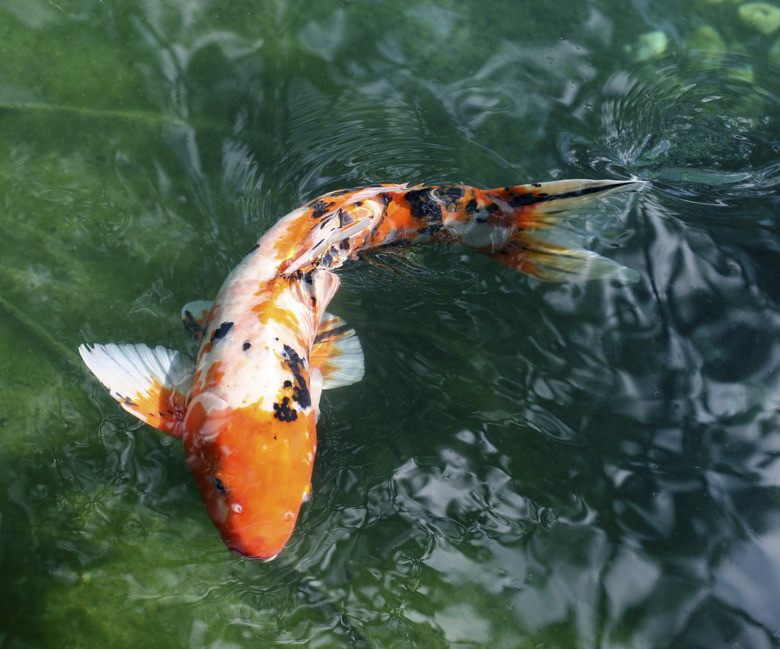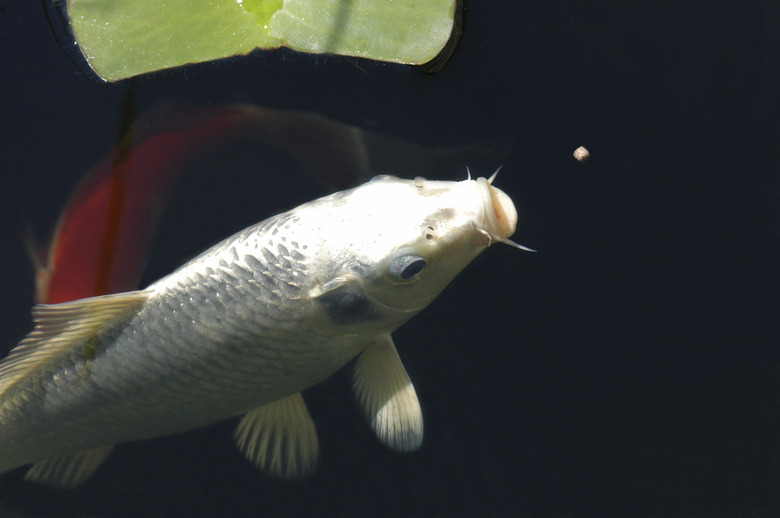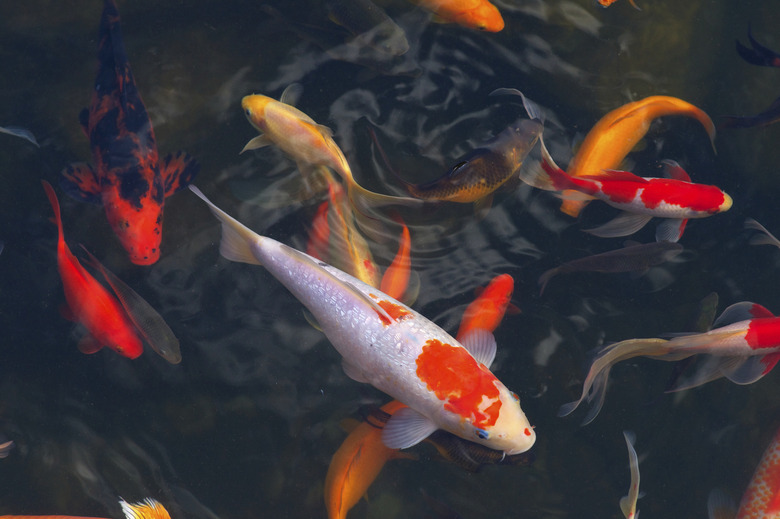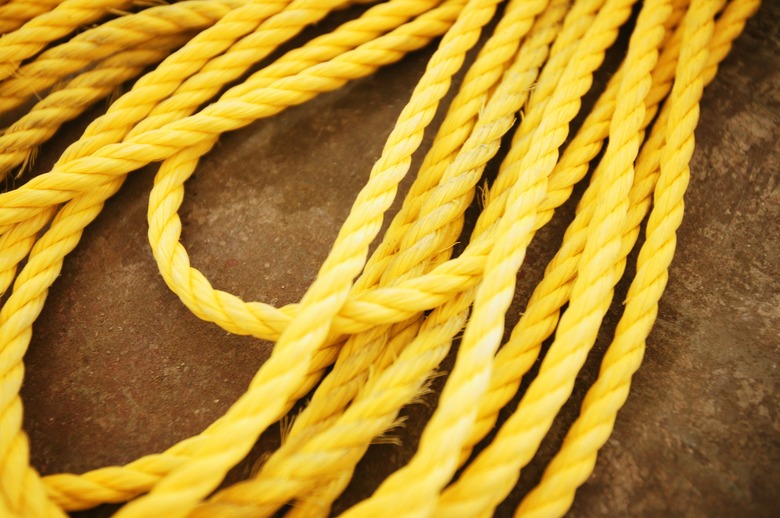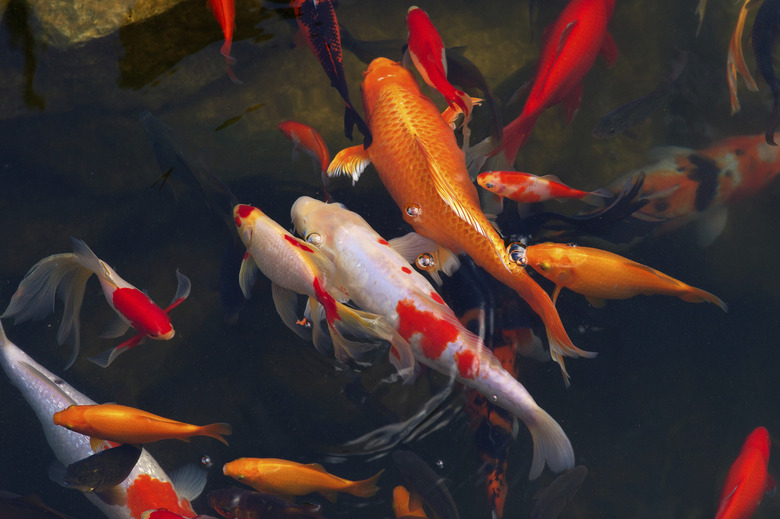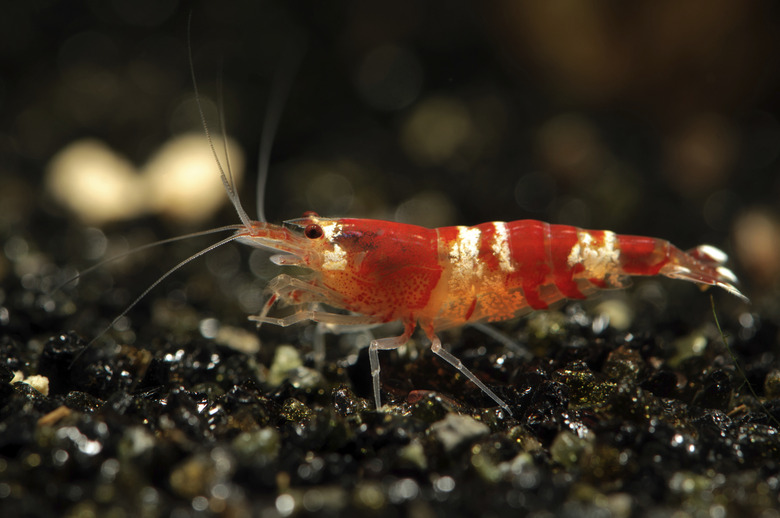Pregnant Koi Fish
"Pregnant koi" is a term for female koi who are filled with eggs they are ready to lay. Koi do not get pregnant and are not live-bearers. Koi fish typically mate in warmer water in the spring or summer seasons. The mating period lasts about two to three days in which the female lays the eggs upon various surfaces while the male shortly after fertilizes them.
Carrying Term
Carrying Term
Female koi start to carry their eggs around wintertime for a few months until the mating seasons comes around. They carry several thousands of delicate, translucent eggs and will feed more eagerly than usual during the egg-carrying period. Do not expect this from females less than three years old, as koi are not fully mature until this time. Younger koi can breed, but the quality of the offspring will be quite low.
Appearance
Appearance
The appearance of a female that is carrying eggs should be very noticeable. The female will have a bloated appearance that will seem one-sided, usually the left side. She will noticeably larger than the male koi. If you notice this appearance in an immature female koi, or late in the mating season, it may be indicative of disease or some sort of parasite.
Spawning
Spawning
When you notice your "pregnant" koi is engorged with eggs, help her out by providing areas to lay her eggs so they can be easily collected for incubation afterward. Use nylon rope cut into several strips, each a few feet long, and secure these along the pond walls as a resting point for her eggs. Koi will pick up on this fast and prefer a soft area to lay their eggs in comparison with a rough, hard surface.
Signs that mating will soon take place are seeing the male nudging and rubbing against the female. The actual spawning itself is brief, lasting about half an hour. A sign that the mating has already occurred is observing a foamy like substance on the surface of the water. The female will also appear to be exhausted.
Complications
Complications
Sometimes female koi can fail to release their eggs. The eggs can reabsorb over time, but this is a slow process. Unreleased eggs can cause infection in the fish such as septicemia, and the results can be life-threatening. Many owners will have a professional manually remove the eggs before breeding as a safe breeding alternative because of the breeding process, which can pose harm to the fish. The breeding process can be pretty rough on the female koi; males may injure the female as several of them may go after the same female. Injuries can occur while the fish are working at expelling the eggs or during the general spawning period. Wounds and missing scales are common after the breeding process. It is important to keep a watchful eye during the spawning period because males can also become overaggressive, and fish may need to be separated.
Egg Care
Egg Care
After the mating process, remove the ropes keeping the eggs intact and house in an aquarium or separate pond to protect them from being eaten by other adult koi, including the parents. They will do well in at least a 100-gallon tank with only a few inches of water. They will hatch in about three to four days and will not begin to swim until they are about two to three days old. It is best to keep them in the tank or separate pond until they reach about 3 inches to prevent other fish from eating them. During this time, feed them brine shrimp larvae, brine shrimp and crumbled koi flake food.
